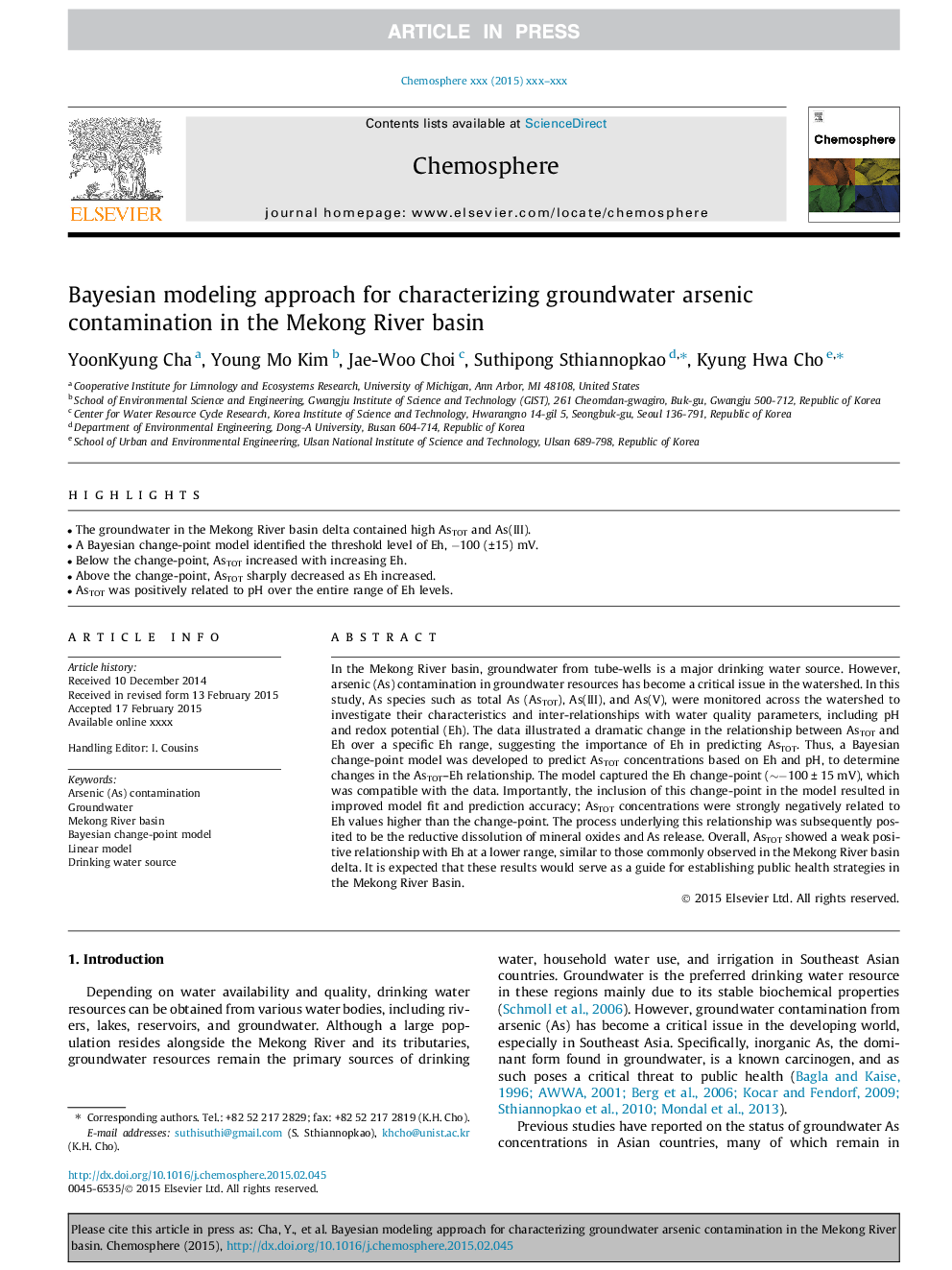| Article ID | Journal | Published Year | Pages | File Type |
|---|---|---|---|---|
| 6307212 | Chemosphere | 2016 | 7 Pages |
Abstract
In the Mekong River basin, groundwater from tube-wells is a major drinking water source. However, arsenic (As) contamination in groundwater resources has become a critical issue in the watershed. In this study, As species such as total As (AsTOT), As(III), and As(V), were monitored across the watershed to investigate their characteristics and inter-relationships with water quality parameters, including pH and redox potential (Eh). The data illustrated a dramatic change in the relationship between AsTOT and Eh over a specific Eh range, suggesting the importance of Eh in predicting AsTOT. Thus, a Bayesian change-point model was developed to predict AsTOT concentrations based on Eh and pH, to determine changes in the AsTOT-Eh relationship. The model captured the Eh change-point (â¼â100 ± 15 mV), which was compatible with the data. Importantly, the inclusion of this change-point in the model resulted in improved model fit and prediction accuracy; AsTOT concentrations were strongly negatively related to Eh values higher than the change-point. The process underlying this relationship was subsequently posited to be the reductive dissolution of mineral oxides and As release. Overall, AsTOT showed a weak positive relationship with Eh at a lower range, similar to those commonly observed in the Mekong River basin delta. It is expected that these results would serve as a guide for establishing public health strategies in the Mekong River Basin.
Related Topics
Life Sciences
Environmental Science
Environmental Chemistry
Authors
YoonKyung Cha, Young Mo Kim, Jae-Woo Choi, Suthipong Sthiannopkao, Kyung Hwa Cho,
